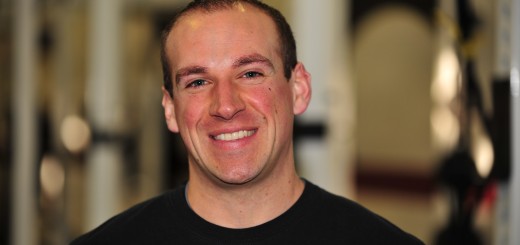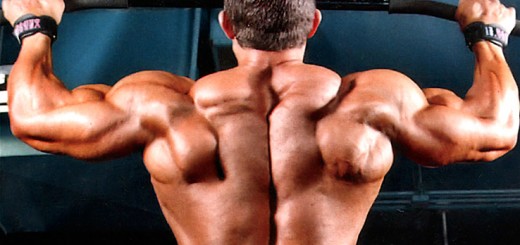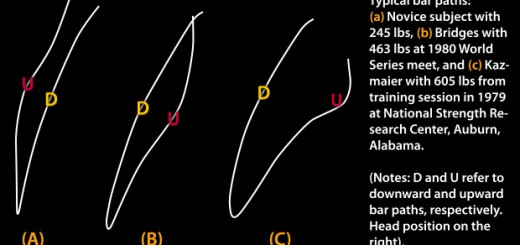Regular Cardio is Making you FAT
In an age where everyone is quick to hit the roads or treadmill to carve off those holiday pounds, or look great for beach season many turn to cardio. The trouble is, incorrect usage will not only burn off that hard-earned muscle, but it will stall out your ability to burn fat.
Regular Cardio Will Make You Fat

Here’s what you need to know…
• When using cardio while dieting, begin by doing the minimum necessary for fat loss, not the maximum.
• The most effective cardio for retaining muscle is the kind you don’t need to recover from, which is walking.
• When it comes to doing cardio for fat loss, it’s either slow and easy (walking) or fast and torrid (HIIT). The middle ground can make you fatter.
• Don’t think of HIIT as calorie burning cardio, but rather muscle building cardio.
Whenever the topic of “cardio” comes up, it always ignites a firestorm of differing opinions, most dealing with how much people hate it or how you have to do it to get shredded. What never gets clearly explained, though, is the context and reasoning for which it’s being done. This is crucial to understand, because cardio from a conditioning and endurance standpoint is going to be very different from a physique and bodybuilding perspective.
For a competitive athlete, it’s likely very important that some kind of energy systems work be performed that either prepares them for their sport or aids in building overall work capacity. In contrast, for a physique competitor, cardio is employed for the sole purpose of either weight control/maintenance or creating a calorie deficit for fat loss. Energy systems development is likely a non-issue, provided the physique competitor is lifting with enough frequency and relative intensity.
Still, when it comes to doing cardio for fat loss, bodybuilders – if they want to preserve their muscle mass – need to take it either slow and easy or fast and torrid. The middle ground can actually make you fatter.
Slow and Easy
Speaking specifically to the bodybuilders, you have to ask yourself the following:
If my primary goal is maximal muscle, do I want to be performing a high volume of an entirely conflicting activity?
Please tell me you didn’t answer yes to this. This isn’t to dissuade people from doing cardio. If you like cardio, and I know some people that do, by all means do as much as you want. But be cognizant that it may be a conflicting factor that you have to account for if you want to get as big and lean as possible.
If, however, you’re going to do cardio, it’d be best to do something that won’t conflict with your goals and that’s easy to recover from, namely, easy walking. So, if you’re doing the incline walks on the treadmill, you’re probably doing something right. Just keep it as short as necessary.
However, if you’re insistent on stair stepping for an hour to “striate the glutes,” or walking on an incline for two hours as contest prep, consider the following:
You have to take the Specific Adaptation to Imposed Demands (SAID) principle into account.
If you’re dieting for a show and your lifting volume goes down but your cardio goes up, what’s the primary stimulus your body is going to need to adapt to? The cardio. Now how does one become more efficient at slow, aerobic cardio? By decreasing overall energy output, which means burning fewer calories to do the same activity.
So how do we increase energetic/caloric output? We get rid of the most metabolically expensive tissue we have that’s taking up those calories, which means our muscle.
The net result is that you over-diet for a show, lose muscle, lose fullness, and your physique suffers. Or, for the non-competitive bodybuilder, you just cut into your muscular gains come summer when you all you wanted to do was cut down for the beach. Not the outcome you wanted.
The answer isn’t to refrain from ever doing cardio, but to employ itintelligently. Imagine this hypothetical scenario:
Bodybuilder A trains high-frequency six days a week on the Reactive Pump program, and each training session burns on average of 450 calories over a 1.5 hour period, and he uses peri-workout nutrition. He weighs 240 pounds in the offseason and he’ll be dieting down to 220. He stays lean year round and his caloric intake is 4200 calories while his expenditure is 3800.
Bodybuilder A’s active metabolic rate is 3800.
Bodybuilder B does his own type of training. He trains high-frequency as well, 5-6 days a week, but his workouts aren’t as intense and they take about 2 hours. He also does an additional 45 minutes of cardio every workout, which equals about 650 calories.
He uses IIFYM (If It Fits Your Macros) and doesn’t pay much attention to food quality, and his peri-workout nutrition consists of a shake before and after training, followed by tons of low-quality carbs. He gets fat in the offseason and his caloric intake is about 5500 calories, but his expenditure is only 4500, which puts him into a significant surplus. His offseason weight is 270, but he’ll walk on stage at 220 as well.
Bodybuilder B’s active metabolic rate is 4500.
 Now let’s move into the competition prep phase. Both start 24 weeks out. Bodybuilder A has to lose only 20 pounds, which is less than a pound a week. Bodybuilder B, though, has to lose 50 pounds, so approximately 2 pounds a week.
Now let’s move into the competition prep phase. Both start 24 weeks out. Bodybuilder A has to lose only 20 pounds, which is less than a pound a week. Bodybuilder B, though, has to lose 50 pounds, so approximately 2 pounds a week.
Bodybuilder A does ZERO cardio during his offseason, other than going for leisurely walks that don’t stress his adaptive response at all. So by reducing his calorie intake very gradually and maintaining his peri-workout nutrition, his cut is easy to manage. Only the last couple of weeks before the contest does he do any cardio, and it’s only for 30 minutes a pop. He also does a few HIIT bouts to really accelerate the fat loss.
Because his loss has been more gradual, he has to resort to fewer dirty tricks to lose the weight and his metabolism hasn’t slowed significantly. He still has a cheat meal a week before the contest. He steps on stage big, ripped, and vascular.
Post contest, he enjoys another cheat meal and eats dirty for a few days, but he hasn’t been calorie or nutrient deprived, so his metabolism doesn’t have a huge rebound. After 2-3 weeks he’s back to regular training and he’s set himself up for solid muscle gains.
Bodybuilder B, though, has a lot of fat to shed. Even though his initial caloric output his higher, he needs a bigger daily deficit to lose weight. He ups his cardio to 2 hours, but now he’s increased his metabolic rate while at the same time cutting calories. He’s constantly hungry and his workouts really start to suffer. He’s not very smart about his peri-workout nutrition, he’s often flat, and his strength starts heading south.
His metabolic rate starts to slow significantly because of his lowered caloric intake and his body begins to deplete muscle. Increasing his overall activity while heavily decreasing his calories makes his cut absolutely miserable. Oh, he still gets to 220, but he’s soft looking and he’s lost significant size.
Once the contest is over, he binges like crazy because he’s been calorie and nutrient starved for weeks. Subsequently he gets even fatter than before, setting himself up for another hard cut a year from now.
Obviously, scenario A is where we want to be, so here are the major takeaways:
• Clearly define whether you need cardiovascular training for physical performance or purely for body composition management.
• The most effective cardio for retaining muscle is the kind you don’t need to recover from, which is walking.
• When using cardio while dieting, begin by doing the minimum necessary for fat loss, not the maximum.
Of course, there’s the other alternative.

HIIT It
HIIT (High-Intensity Interval Training) isn’t really in the same category as traditional “cardio.” If you do it right with extreme intensity, it’s very complimentary to hard resistance training.
While it can be highly effective for fat loss and improved muscularity, the devil is in the details. When deciding which version of cardio to use, the body’s natural physiological adaptations need to be taken into account.
Consider again how the “middle zone” cardio we talked about above (specifically in reference to our Bodybuilder B) is lousy for muscle gains. Adaptation is a response to stress, and biology will always seek efficiency and, consequently, minimization of stress. As such, the adaptation to this middle zone cardio is less muscle and more body fat.
In contrast, consider something like sprinting. Sprinting is the cardio version of maximal strength training. However, in this case we’re not moving weight, we’re moving our bodies. This essentially makes sprinting a “relative strength” activity, in that it’s the amount of force – in this case, propelling the body through linear space – we can exert in relation to our body size or weight.
Of course, we’re only as fast as we are strong, and the stronger we are, the faster we can be. And that strength, of course, comes from muscle. Even further though, sprinting is an expression of power output; it’s mass x acceleration. The more efficiently we can alter our physiology and replace fat with muscle, the greater the force output and thus, the faster our potential speed.
Consider then, if sprinting is the stress, and the imposed demands are maximal speed that’s compounded by mass relative to our ability to accelerate, what will make us more efficient/faster at sprinting? Getting stronger, of course, and sprinting itself can be anabolic.
As far as loss of fat, it’s the extraneous, unwanted, unneeded tissue that impedes acceleration. That’s why sprinters are lean. Sprinters have the lowest body-fat percentages relative to any other athlete. And I guarantee none of them train in a calorie deficit to look like that.
Their body composition and muscularity is the result of the natural biological adaptation that’s taken place in response to their imposed demand/stress, which, in this case, is maximal efficiency at maximal force output.
The body’s adaptation to middle ground cardiovascular exercise, however, is the opposite of weight training. In lifting weights, maximal strength often requires maximal bodyweight with higher body fat levels, but in cardio, maximal speed requires minimal bodyweight relative to the amount of muscle needed to reach top speed. In this case, however, minimal still equates to a lot of muscle, otherwise you won’t ever reach your speed potential.
Too much sprinting, however, can quickly burn you out, just as too much maximal lifting can. The dosage is hugely important.
These are the takeaway lessons:
• Lifters should augment resistance training with HIIT.
• Sprint-based cardio can equate to lower body fat levels.
• Don’t think of HIIT as calorie-burning cardio, but rather muscle-building cardio.
I’ve laid out two paths for you. The first – walking – will gradually get you cut without impeding further muscular gains, and the second – HIIT – will get you cut while building muscle. The choice is yours. Just avoid the middle ground.
Note: Alexander Cortes contributed to this article.
Original article by:





